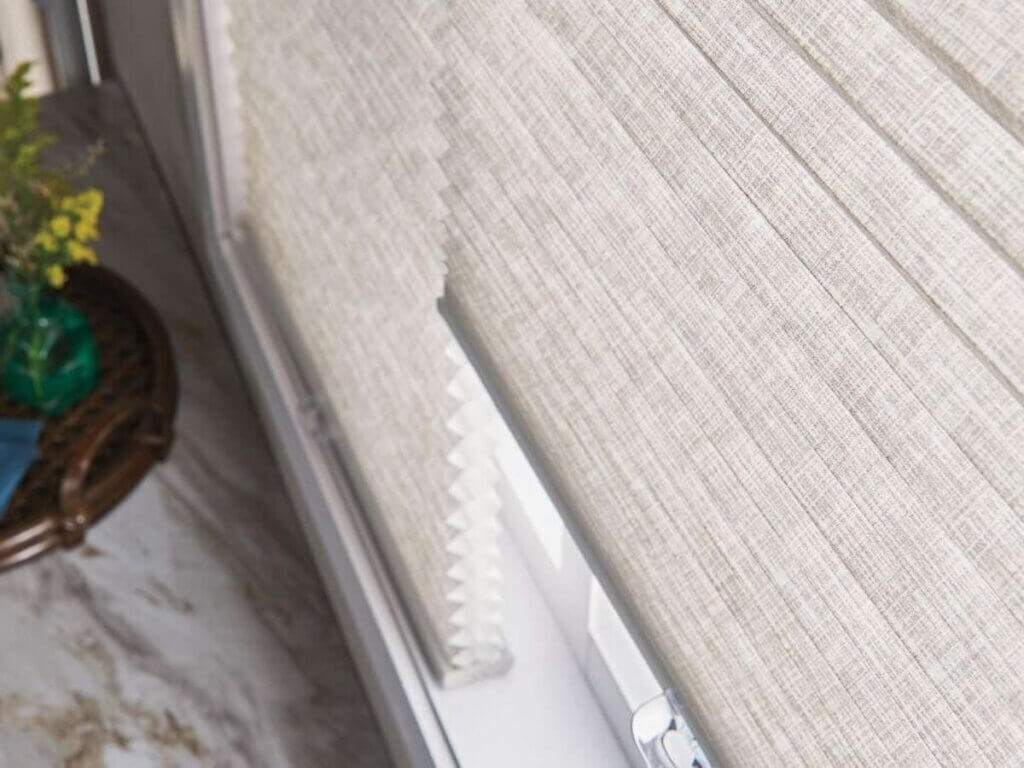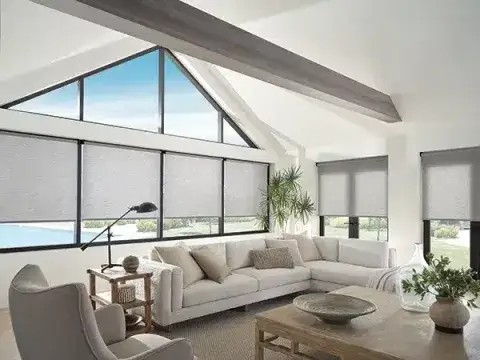If you’re shopping for new window treatments in St. Louis, cellular shades might already be on your radar. Known for their honeycomb design and impressive insulation properties, these shades are a popular choice among homeowners who want energy efficiency, light control, and style in one package. This guide breaks down the complete list of cellular shades pros and cons, helping you decide whether they’re the right fit for your windows and your lifestyle.
Cellular shades aren’t just about looks. Their structure traps air in small cells, creating a layer of insulation that helps keep your home warm during Missouri winters and cool during humid St. Louis summers. Below, you’ll find everything you need to know—benefits, drawbacks, and expert insights from the local window treatment specialists at Made in the Shade St. Louis.
What Are Cellular (Honeycomb) Shades?

Cellular shades, also known as honeycomb shades, feature a unique pleated design composed of interconnected fabric cells. These air pockets create a cushion that improves energy efficiency by reducing heat transfer through your windows. They’re available in single-cell or double-cell varieties, each offering different levels of insulation and light control.
Their minimalist appearance makes them suitable for nearly any interior style—from modern lofts in downtown St. Louis to classic brick homes in Webster Groves.
Top 5 Benefits of Cellular Shades in St. Louis
Improved Insulation and Energy Efficiency
St. Louis weather fluctuates between freezing winters and hot, humid summers. Cellular shades help reduce heating and cooling costs by trapping air within their honeycomb cells, acting like an insulating barrier. Double-cell designs can further enhance efficiency, making them ideal for energy-conscious homeowners.
Light Control, Privacy, and UV Protection
You can choose from light-filtering or blackout fabrics to match your lighting needs. Light-filtering cellular shades soften natural light while maintaining privacy and preserving the view. Blackout options block nearly all sunlight—perfect for bedrooms or home theaters. Both types protect furniture and flooring from UV damage.
Noise Reduction and Sound Absorption
Because the air pockets within cellular shades absorb sound, they’re great for reducing street noise—a real plus if you live near busy areas like Clayton or downtown. The thicker the fabric and the higher the number of cells per shade, the better the noise reduction.
Versatility in Style and Options
Cellular shades are available in a variety of colors, pleat sizes, and controls, including motorized options for added convenience. They blend well with both traditional and contemporary interiors, offering sleek aesthetics without bulky hardware.
Value for Homeowners
Cellular shades add long-term value through improved comfort, energy savings, and style. While they cost more than basic blinds, the added insulation and sound absorption can make them a smart investment for homeowners in St. Louis.
Key Drawbacks to Consider
Higher Up-Front Cost Compared to Basic Shades
Cellular shades are more expensive than the usual blinds, like vinyl or aluminum, especially double-cell models. However, the energy savings often offset this cost over time.
Cleaning and Maintenance Can Be More Involved
Dust can accumulate within the pleats. While cleaning is easy with a low-suction vacuum or light dusting brush, it requires some regular upkeep to maintain the shades’ crisp appearance.
Limited View When Fully Raised
Because the pleats stack compactly, cellular shades don’t offer a completely unobstructed view when raised. This might be noticeable if you enjoy wide, open window views.
Installation Considerations
Precise measurements are key for a clean fit. Improper installation can affect light gaps and performance, so professional installation is recommended—especially for larger or motorized shades.
Single vs Double Cell: Which Fits Your Home?
Single-cell shades:
- Best for smaller windows or mild climates
- Lower cost and lighter weight
- Adequate insulation for moderate energy needs
Double-cell shades:
- Ideal for homes needing extra insulation
- Superior noise reduction and light blocking
- Slightly higher cost but better energy efficiency
In St. Louis, where seasonal extremes are common, double-cell shades are often the more practical option for year-round comfort.
Quick Pros and Cons Summary Table
Pros | Cons |
Excellent insulation and energy savings | Higher upfront cost |
Effective light and UV control | Regular cleaning required |
Sound absorption and noise reduction | Slightly limited outside view |
Variety of styles and colors | Heavier double-cell versions need careful installation |
Boosts comfort and home value | Not ideal for humid or damp areas |
FAQs About Cellular Shades Pros and Cons
Q1: Are cellular shades worth it in a climate like St. Louis?
Yes. Cellular shades are particularly effective in St. Louis because they insulate against cold winters and reduce heat gain during humid summers. The energy savings and added comfort make them one of the most efficient window treatments for this region.
Q2: What is the difference between light-filtering and blackout cellular shades?
Light-filtering shades diffuse sunlight, softening natural light without sacrificing privacy. Blackout shades, on the other hand, use denser materials to block nearly all light, ideal for bedrooms, nurseries, or media rooms.
Q3: How long do cellular shades last?
With proper maintenance, quality cellular shades can last 10 to 15 years. The key factors are regular cleaning and professional installation to prevent wear on cords, tracks, and pleats.
Upgrade Your St. Louis Home with Energy-Smart Cellular Shades
Ready to experience the comfort and efficiency of cellular shades for your St. Louis home? Made in the Shade St. Louis offers expert design consultations, custom measurements, and professional installation for homes across the metro area.
Schedule your free consultation today to discover cellular shade options that perfectly fit your windows.


